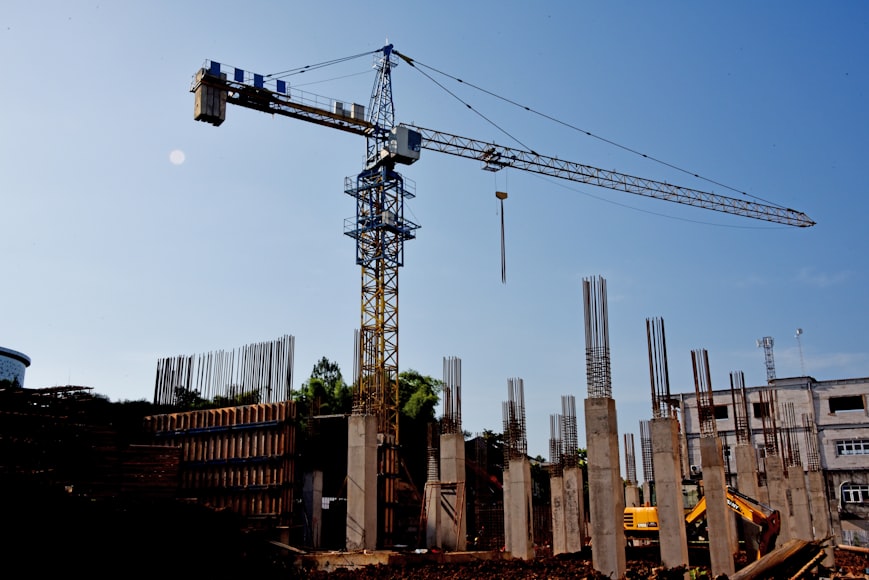The last few years have seen the remarkable rise of digital twins in production. This innovative technique makes use of the digital image representation of assets to improve project management, design as well as operational efficiency. Through creating a virtual replica of the construction process, participants can model, evaluate, and enhance various aspects of the procedure to produce better results and lower expenses as well as reduce risks. The result is in high-quality construction projects that surpass the expectations of. Understanding how you can leverage this revolutionary technology in FF&E and OS&E Procurement will become increasingly essential as the market grows.
What is Digital Twin Technology?
Digital twins are virtual models that mirror bodily gadgets or systems all through their lifespan, the use of records sourced from sensors, 3-D modeling software, and Building Information Modeling (BIM). By simulating real-world conditions digital twins allow construction groups to display performance, expect troubles early, and make knowledgeable decisions fast and with a bit of luck in real time.
Enhancing Project Planning and Design
Digital twins are digital models that intently mirror physical items or structures at some stage in their lifespan, using information sourced from sensors, 3-D modeling software programs, and Building Information Modeling (BIM). By simulating actual international conditions in real-time, virtual twins allow creation teams to monitor performance carefully, assume troubles early, and make smart selections quickly and hopefully in real time.
Digital twins are virtual fashions that correctly replicate bodily objects or structures over their lifespan, the use of data sourced from sensors, 3D modeling software, and Building Information Modeling (BIM). By simulating actual world situations virtual twins allow production groups to screen performance, identify troubles early, and make informed choices speedy and securely in actual time.
Improving Construction Management
Digital twin technology plays an essential part in construction management by offering real-time insights into project progress. Integrating data from construction sites such as equipment usage, labor hours, and material consumption with data from digital twins offers project managers real-time views of project status; this visibility allows project managers to identify delays more quickly, allocate resources more effectively, and make data-driven decisions about resource allocation or management decisions more quickly and reliably.
Digital twins also allow construction teams to mitigate risks associated with construction projects by simulating various scenarios and developing contingency plans if material delivery delays become likely; managers can then utilize their digital twin to explore alternative schedules or resource allocation methods, thus keeping projects on schedule.
Enhancing Operational Efficiency
Once construction projects have been completed, digital twins continue to provide value as tools for facility management and operations. Building operators can utilize them to monitor various systems like HVAC, lighting, and security – real-time monitoring allows proactive maintenance strategies that reduce downtime costs as well as operational expenses.
Digital twins also enable data analysis to optimize building performance over time, by continually collecting and analyzing building performance information to detect patterns that influence maintenance schedules and energy use – an ability that not only maximizes operational efficiency but also contributes to sustainability efforts by decreasing energy usage and waste accumulation.
Supporting Sustainability Initiatives
As construction industry leaders face mounting pressure to embrace more eco-friendly practices, digital twin technology provides invaluable tools that support this initiative. By simulating the environmental effects of different materials and construction methods, stakeholders can make more informed decisions that prioritize sustainability.
Digital twins can provide energy modeling services that enable teams to evaluate potential benefits associated with adopting renewable or more energy-efficient sources, or systems. Furthermore, this technology aids organizations with long-term sustainability assessment for projects.
Overcoming Challenges and Limitations
Digital twin technology can bring numerous benefits to construction companies However, the implementation has significant obstacles. The most significant obstacle to overcome is the cost of initial implementation for FF&E and OS&E Procurement Services; investments might require the purchase of software licenses, hardware purchase as well as courses for training. Furthermore, the complicated integration of data from different sources may consume more time and effort than originally anticipated.
Additionally, industry-wide standards and protocols to enable interoperability between software platforms and tools are needed for the widespread adoption of this emerging technology. Addressing such obstacles will be key.
The Future of Digital Twin Technology in Construction
The construction generation’s future seems shiny for digital dual technology. As advances in artificial intelligence, device learning, and the Internet of Things (IoT) continue to boost, virtual twins turn into even greater state-of-the-art permitting deeper data analysis, predictive modeling, and automation further enhancing creation strategies.
As the call for sustainable and electricity-green building practices increases, digital dual generation will play an important element in supporting the development enterprise to meet those challenges. Through real-time insights and facts-pushed decision-making tactics, the digital twin era will play an essential role in growing smarter constructed environments that might be resilient towards climate trade.
Conclusion
Digital dual generation is revolutionizing modern production projects by supplying a powerful device for planning, management, and operational efficiency. By growing virtual replicas of bodily belongings, stakeholders can benefit from treasured insights, enhance collaboration, and optimize overall performance for the duration of the mission lifecycle. As the development enterprise embraces this revolutionary generation, the potential for stepped-forward sustainability, decreased prices, and more desirable task consequences become increasingly possible. Embracing virtual twin technology isn’t always only a trend; it’s a strategic circulate closer to a greater efficient and sustainable destiny in construction.









